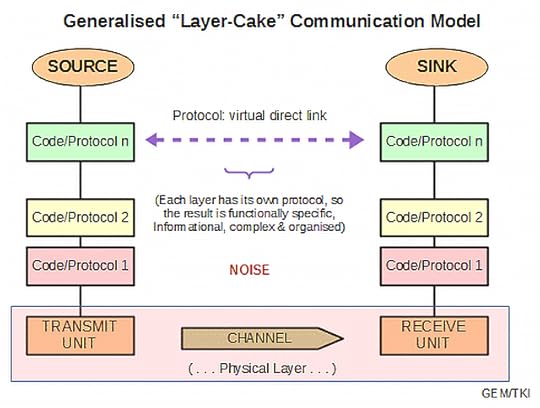Michael J. Behe's Blog, page 570
November 13, 2018
How to Engage in Argumentum ad Gannitum
Today I coin a new Latin phrase in honor of our frequent interlocutor daveS. Here it is: Argumentum ad Gannitum – the argument from whining. (“Gannitum” being Latin for “whining”).
The argument from whining takes this form:
Person A makes an argument supported by logic and evidence that he believes compels a conclusion.
Person B, instead of making a counter argument based on logic and evidence, says something like “Admit that you may be wrong” or “It’s not my job to show you how you are wrong.”
Here is an example from a recent combox discussion with daveS:
Barry makes the following argument:
Either there is a God or there is not. If there is a God, meaning is possible. If there is no God, meaning is not possible. Let us, therefore, assume for the sake of argument that an atheist such as yourself is correct. There is no God. Therefore, meaning is not possible.
daveS responds:
Barry, Is it possible that you are wrong?
No, really, that is his response. Check it out here.
Uh, yeah dave, it is certainly possible that I am wrong. But no one will ever know that I am wrong if all you do is whine about my argument instead of attempt to rebut it.
In fairness, dave later made a run at trying to show meaning in a meaningless universe. It amounted to “I know there is no meaning, but I feel like there is, so there is.”
Copyright © 2018 Uncommon Descent . This Feed is for personal non-commercial use only. If you are not reading this material in your news aggregator, the site you are looking at is guilty of copyright infringement UNLESS EXPLICIT PERMISSION OTHERWISE HAS BEEN GIVEN. Please contact legal@uncommondescent.com so we can take legal action immediately.
Plugin by Taragana
BBC: Chimpanzees show empathy and altruism just like humans
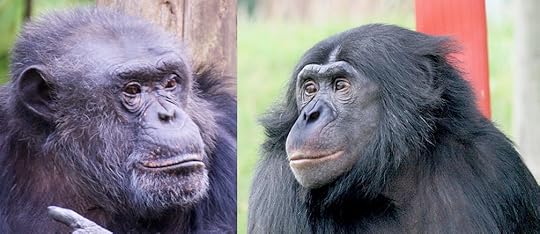
common chimpanzee and bonobo/Chandres William H. Calvin, CC
The BBC has also thought that chimpanzees were entering the Stone Age.
Eminent anthropologist Frans de Waal explains that politicians have a lot to learn from how chimpanzees show empathy. “How chimpanzees reveal the roots of human behaviour” at BBC
Reality: Chimpanzees don’t seek humans out the way dogs do. In many ways, dogs are more like humans than chimpanzees are and better able to communicate with us emotionally. Dogs don’t seek out chimpanzees, come to think of it, though recently, some researchers needed to convince themselves that something like that was happening between monkeys and wolves. (Uh, no.)
Physical resemblance is apparently not all it’s cracked up to be. Serious study might be worthwhile.
Follow UD News at Twitter!
See also: A top anthropology finding of year show humans cognitively closer to dogs than chimps
Anthropologist does not see chimpanzees as fuzzy humans If a well-to-do idler wants to pretend that his spaniel requires psychoanalysis, life’s rotten for that individual dog. But dogs are hardly going extinct. The fact that chimpanzees are an endangered species means that it’s important to understand them as animals who need a specific habitat, not as pre-humans entering the Stone Age.
Intelligence tests unfair to apes?
and
Are apes entering the Stone Age?
Copyright © 2018 Uncommon Descent . This Feed is for personal non-commercial use only. If you are not reading this material in your news aggregator, the site you are looking at is guilty of copyright infringement UNLESS EXPLICIT PERMISSION OTHERWISE HAS BEEN GIVEN. Please contact legal@uncommondescent.com so we can take legal action immediately.
Plugin by Taragana
Making epigenetics (non-Darwinian evolution) instead of genetics destiny
It had to happen: Someone making epigenetics stand in for the selfish gene, an all-purpose gene-splain:
If epigenetic research utilizing these new technologies will successfully shed some light in disease prevention, diagnosis, and therapy, then the research can expand to study epigenetics related to human behavior and moods. Aggression, violence, adultery, sexual preferences, risk-taking, happiness, depression, and even spirituality may all be affected by gene regulation, including epigenetics, via mechanisms not yet precisely defined. There also is much evidence that diet, sleep, fasting, exercise, and stress regulate gene expression but here, too, the way they do it needs to be explored.
Incorporating these new epigenetic technologies when examining the multiple biological factors that regulate gene expression will better illuminate whether or how environmental factors and lifestyles can modify what we classically believed was our DNA destiny. John D. Loike, “The New Frontiers of Epigenetics” at The Scientist
So now we will have an epi-genesplain? Um, …
Follow UD News at Twitter!
See also: There’s a gene for that… or is there?
Actual epigenetics, not your destiny:
Epigenetics: Roundworm study focuses on health effects transmitted through sperm
Nicotine effects persist through several generations of mice, via sperm Researcher: “Not much had been known about the effects of paternal smoking on their children and grandchildren. Our study shows that paternal nicotine exposure can be deleterious for the offspring in multiple generations.”
Epigenetics is involved in strengthening memory
Anthropologist John Hawks is cool toward epigenetics shedding light on evolution. Responses like this from a usually level-headed thinker mainly demonstrate that epigenetics is likely to upset quite a few applecarts.
Peter Ward: Epigenetics explains why there are fewer “species” than we think
and
Epigenetic change: Lamarck, wake up, you’re wanted in the conference room!
Copyright © 2018 Uncommon Descent . This Feed is for personal non-commercial use only. If you are not reading this material in your news aggregator, the site you are looking at is guilty of copyright infringement UNLESS EXPLICIT PERMISSION OTHERWISE HAS BEEN GIVEN. Please contact legal@uncommondescent.com so we can take legal action immediately.
Plugin by Taragana
Logic & first principles: Analogy, Induction and the power of the principle of identity (with application to the genetic code)
One of the commonest objections we meet when we discuss design inferences — especially concerning the genetic code, is that a claim is “just an analogy” (with implied conclusion that analogies are weak or fallacious). This then extends to inductive arguments used. This common error must be corrected and (as will be shown) the principle of distinct identity helps us to do so.
Before we show that, let us pause to note from the Stanford Enc of Phil, just to counter-weight the tendency of many objectors to be quickly dismissive of anything said by “one of those IDiots” without bothering to actually address the substantial issue at stake:
>>An analogy is a comparison between two objects, or systems of objects, that highlights respects in which they are thought to be similar. Analogical reasoning is any type of thinking that relies upon an analogy. An analogical argument is an explicit representation of a form of analogical reasoning that cites accepted similarities between two systems to support the conclusion that some further similarity exists. In general (but not always), such arguments belong in the category of inductive reasoning, since their conclusions do not follow with certainty but are only supported with varying degrees of strength. Here, ‘inductive reasoning’ is used in a broad sense that includes all inferential processes that “expand knowledge in the face of uncertainty” (Holland et al. 1986: 1), including abductive inference.
Analogical reasoning is fundamental to human thought and, arguably, to some nonhuman animals as well. Historically, analogical reasoning has played an important, but sometimes mysterious, role in a wide range of problem-solving contexts. The explicit use of analogical arguments, since antiquity, has been a distinctive feature of scientific, philosophical and legal reasoning. This article focuses primarily on the nature, evaluation and justification of analogical arguments. Related topics include metaphor, models in science, and precedent and analogy in legal reasoning . . . >>
Notice, analogical reasoning “is fundamental to human thought” and analogical arguments reason from certain material and acknowledged similarities (say, g1, g2 . . . gn) between objects of interest, say P and Q to further similarities gp, gp+1 . . . gp+k. Also, observe that analogical argument is here a form of inductive reasoning in the modern sense; by which evidence supports and at critical mass warrants a conclusion as knowledge, but does not entail it with logical necessity.
How can this ever work reliably?
By being an application of the principle of identity.
Where, a given thing, P, is itself in light of core defining characteristics. Where that distinctiveness also embraces commonalities. That is, we see that if P and Q come from a common genus or archetype G, they will share certain common characteristics that belong to entities of type G. Indeed, in computing we here speak of inheritance. Men, mice and whales are all mammals and nurture their young with milk, also being warm-blooded etc. Some mammals lay eggs and some are marsupials, but all are vertebrates, as are fish. Fish and guava trees are based on cells and cells use a common genetic code that has about two dozen dialects. All of these are contingent embodied beings, and are part of a common physical cosmos.
This at once points to how an analogy can be strong (or weak).
For, if G has in it common characteristics {g1, g2 . . . gn, | gp, gp+1 . . . gp+k} then if P and Q instantiate G, despite unique differences they must have to be distinct objects, we can reasonably infer that they will both have the onward characteristics gp, gp+1 . . . gp+k. Of course, this is not a deductive demonstration, at first level it is an invitation to explore and test until we are reasonably, responsibly confident that the inference is reliable. That is the sense in which Darwin reasoned from artificial selection by breeding to natural selection. It works, the onward debate is the limits of selection.
With this in mind, we can take a fresh approach to looking at the implications of the genetic code:
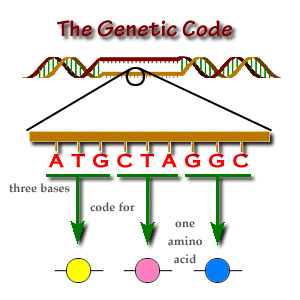
The Genetic Code in action
Where also:
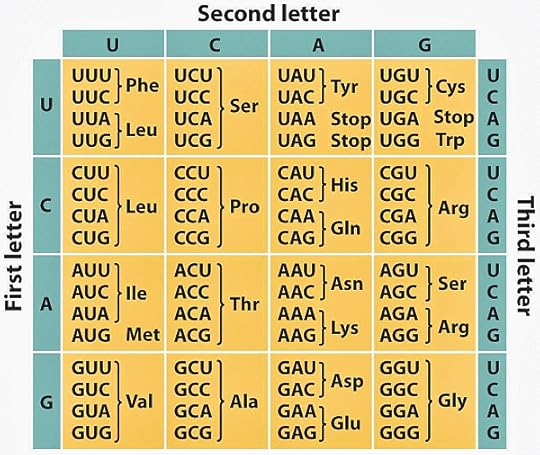
The Genetic code uses three-letter codons to specify the sequence of AA’s in proteins and specifying start/stop, and using six bits per AA
So that:

Protein Synthesis (HT: Wiki Media)
Where we may see, with Yockey, the wider communication system involved:
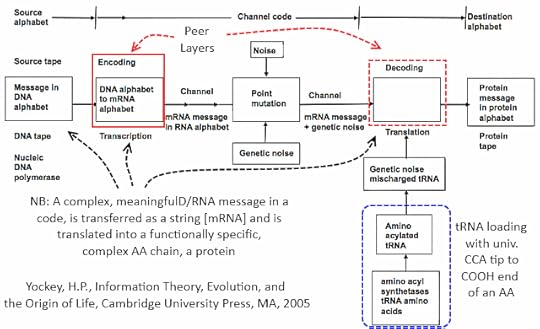
Yockey’s analysis of protein synthesis as a code-based communication process
Comparing, a version of Shannon’s archetype:
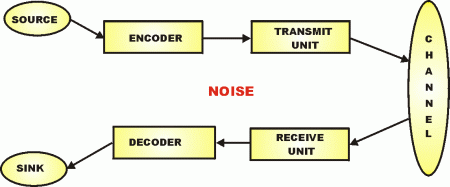
A communication system
. . . and reckoning with the possibility of layering of protocols:
Now, many codes are based on s-t-r-i-n-g data structures (which are foundational to data structures in computing), in which elements from an alphabet are chained to create unique words and messages which are then integrated into a meaningful framework that describes or states or instructs. Text in English and computer code are classic examples. Where, too, such are in fact manifestations of language (and intelligence).
Thus, we see, famously, from Crick in his March 19, 1953 letter to his son Michael, on p. 5:

Crick’s letter
What is the challenge, here?
Simple: the genetic code is at the heart of the cell’s functionality, and is thus antecedent to and an enabling causal factor for cell based life. That code implies a code/protocol based communication system (as Yockey expands) and is inherently linguistic. Language is a characteristic of intelligence and so we manifestly have an epistemic right to infer from the DNA code to intelligence and design as causal to cell based life.
Dismissive arguments on analogy notwithstanding. END
Copyright © 2018 Uncommon Descent . This Feed is for personal non-commercial use only. If you are not reading this material in your news aggregator, the site you are looking at is guilty of copyright infringement UNLESS EXPLICIT PERMISSION OTHERWISE HAS BEEN GIVEN. Please contact legal@uncommondescent.com so we can take legal action immediately.
Plugin by Taragana
November 12, 2018
Neanderthals walked normally, upright, say researchers
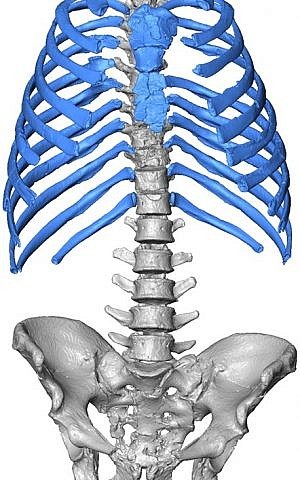
New upright reconstruction of a 60,000 year old skeleton/A. Gómez-Olivencia, A. Barash and E. Been
The skeleton was of a 32-year-old man:
Neanderthals walked upright, had spines straighter than those of modern man, would have been strong and sturdy, and breathed deeply from their bell-, not barrel-shaped ribcages, according to a recently published article written by an international team of scientists.
Busting open the myth of the arm-dragging, hunched-over caveman, the scientists, based at universities in Israel, Spain, and the United States, drew their conclusions from a recently completed 3D virtual reconstruction of the ribcage of the Kebara 2 skeleton — aka “Moshe” — the headless but almost complete Neanderthal remains unearthed in 1983 in a northern Israel cave.Amanda Borschel-Dan, “3-D model of Neanderthal rib cage busts myth of ‘hunched-over cavemen’” at Times of Israel
Hey, you heard it here first: No one evolved faster than the Neanderthal. In just a few short decades…
Follow UD News at Twitter!
See also: No one evolved faster than the Neanderthal Look how smart he got in the last few decades (if you go by a discussion of Neanderthals and language)
Two Neanderthal children from 250 kya showed lead exposure, and much else So much more information is coming to light about Neanderthals and other vanished peoples that
it’s getting harder than ever to find the missing link. We find plenty of stories instead.
and
Neanderthal Man: The long-lost relative turns up again, this time with documents
Copyright © 2018 Uncommon Descent . This Feed is for personal non-commercial use only. If you are not reading this material in your news aggregator, the site you are looking at is guilty of copyright infringement UNLESS EXPLICIT PERMISSION OTHERWISE HAS BEEN GIVEN. Please contact legal@uncommondescent.com so we can take legal action immediately.
Plugin by Taragana
Three new studies “shake up” study of human migrants to North America
We used to think the picture was pretty simple but not any more:
By sequencing and analyzing 15 ancient genomes found throughout the Americas—six of which were older than 10,000 years—these researchers determined that, around 8,000 years ago, the ancestors of Native Americans were still on the move, migrating away from Mesoamerica (what is today Mexico and Central America) toward both North and South America. These groups moved rapidly and unevenly, sometimes interbreeding with local populations, complicating the genetic—and historical—picture even further.
George Dvorsky, “Three New DNA Studies Are Shaking Up the History of Humans in the Americas” at Gizmodo
Apparently, they traveled “great distances at breathtaking speed.”
Potter said genetic data is wonderful, but it doesn’t tell us the whole story. Unlike genetics, archaeology can secure timelines and geographic locations, while also showing continuity and changes to technology, adaptive strategies, and material and cultural connections across time and space. Potter said the new studies will allow “much more complex and realistic models to be developed,” but this process will “require collaboration with archaeologists and geneticists.” George Dvorsky, “Three New DNA Studies Are Shaking Up the History of Humans in the Americas” at Gizmodo
Follow UD News at Twitter!
See also: New find extends back our knowledge of earliest identified North Americans
Were humans in North America 130,000 years ago? Some evidence considered
Were there humans in North America 100 kya? Or was the find just heavy construction equipment damage?
First North Americans might have been Neanderthals, 130 kya…
and
Were there humans in North America 100 thousand years ago?
Copyright © 2018 Uncommon Descent . This Feed is for personal non-commercial use only. If you are not reading this material in your news aggregator, the site you are looking at is guilty of copyright infringement UNLESS EXPLICIT PERMISSION OTHERWISE HAS BEEN GIVEN. Please contact legal@uncommondescent.com so we can take legal action immediately.
Plugin by Taragana
Life forms are not machines and neurons are not neural networks
 From Mind Matters:
From Mind Matters:
Much popular literature leaves the impression that living organisms are machines or even billions of them linked together. For example, at Medium, we learn,
Brains receive input from the outside world, their neurons do something to that input, and create an output. That output may be a thought (I want curry for dinner); it may be an action (make curry); it may be a change in mood (yay curry!). Whatever the output, that “something” is a transformation of some form of input (a menu) to output (“chicken dansak, please”). And if we think of a brain as a device that transforms inputs to outputs then, inexorably, the computer becomes our analogy of choice…
…
But organisms differ from machines in a fundamental way, according to philosopher Sune Holm at the University of Copenhagen. Holm’s specialty is synthetic biology, the attempt to create life form scratch:
One of the most basic objections to the identification of organisms and machines is that their behaviour cannot be reduced to the activities and relations of their parts.
In contrast to a mechanical watch, whose activity is fully determined “from the bottom up” by the activities and organisation of its parts, organisms influence the activities of their parts.
For example, your muscles start to grow if you start to exercise. Moreover, the parts of a watch exist before the watch does. It is not the watch itself that builds its own parts. Sune Holm, “Why Living Organisms Aren’t Machines” at RealClearScienceMore.
Follow UD News at Twitter!
See also: Machines just don’t do meaning. And that, says a computer science prof, is a key reason they won’t compete with humans. Human understanding is grounded, as Prof. Mitchell says, in common-sense knowledge about how the world works and why things matter. Researchers have not been able to transfer this understanding to AI but she worries that many teams are moving ahead with projects that require such ability for safety.
and
Researchers find loneliness is hard on the brain. What we think about our lives really does affect our health. What’s less often recognized is that loneliness could cause be a cause of brain damage as well, at least if we go by rodent studies.
(Note: This post went viral at Mind Matters. )
Copyright © 2018 Uncommon Descent . This Feed is for personal non-commercial use only. If you are not reading this material in your news aggregator, the site you are looking at is guilty of copyright infringement UNLESS EXPLICIT PERMISSION OTHERWISE HAS BEEN GIVEN. Please contact legal@uncommondescent.com so we can take legal action immediately.
Plugin by Taragana
Is the human mind best seen as a halting oracle?
 Eric Holloway explains Jonathan Bartlett’s account of the human mind as a halting oracle:
Eric Holloway explains Jonathan Bartlett’s account of the human mind as a halting oracle:
In his paper, “Using Turing oracles in cognitive models of problem-solving” Jonathan Bartlett proposes to model the human mind as a halting oracle.
A brief explanation: Computer science pioneer Alan Turing (1912–1954) imagined a universal machine that can copy any other machine. However, this machine has a critical limitation: It cannot determine whether any given machine will run forever or not. This is known as the halting problem: “There can be no general procedure to decide if a self-contained computer program will eventually halt.”
A halting oracle is a non-mechanical entity that can solve the halting problem for all machines.
A common objection to Bartlett’s idea is that humans cannot be halting oracles because we embed any unsolvable math problem as the halting condition for a loop and a human cannot tell us whether the loop will halt or not.
This objection misses the fact that there is a range of oracles between plain Turing machines and a complete halting oracle. We call these in-between oracles “partial halting oracles.”
We can see that the concept of partial halting oracles is coherent by considering the set of problems solvable by a complete halting oracle. This set is infinite and undecidable (no Turing machine can decide on the correct answer for every problem). Now we remove one item from the set. We still have an infinite and undecidable set, yet it is less than what a complete halting oracle can solve. This partial set lists the problems that can be solved by a partial halting oracle. We can even remove an infinite number of problems from the set and still have an infinite and undecidable set.
If a partial halting oracle is a coherent concept, what can it tell us about the world, empirically? More.
Follow UD News at Twitter!
 See also: Also by Eric Holloway: Does information theory support design in nature?
See also: Also by Eric Holloway: Does information theory support design in nature?
Artificial intelligence is impossible
and
Could one single machine invent everything?
Copyright © 2018 Uncommon Descent . This Feed is for personal non-commercial use only. If you are not reading this material in your news aggregator, the site you are looking at is guilty of copyright infringement UNLESS EXPLICIT PERMISSION OTHERWISE HAS BEEN GIVEN. Please contact legal@uncommondescent.com so we can take legal action immediately.
Plugin by Taragana
November 11, 2018
No, life cannot have meaning in a random universe. Next question?
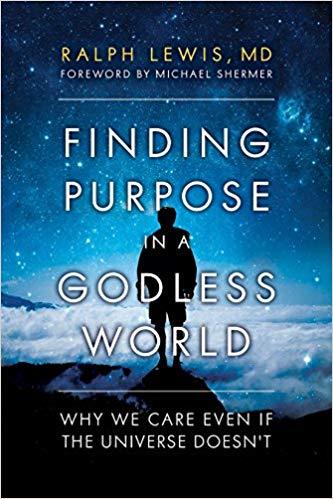 In an excerpt from his recent book, Finding Purpose in a Godless World: Why We Care Even If the Universe Doesn’t, a psychiatrist explains how we can have meaning even though we don’t:
In an excerpt from his recent book, Finding Purpose in a Godless World: Why We Care Even If the Universe Doesn’t, a psychiatrist explains how we can have meaning even though we don’t:
People assume that our human sense of purpose is dependent on the universe having a purpose, and without such purpose they assume that life has no meaning. This is a wholly unsubstantiated assumption. Our purposeless universe has become infused with local pockets of purpose, and this has happened through entirely natural, spontaneous processes. Purpose emerged in the universe with life itself. Purpose and meaning (and morality too) can be entirely explained as natural phenomena, emergent from a random, material universe.
All living creatures are purposeful. Simple creatures are goal-directed in rudimentary and non-conscious ways. Highly evolved creatures like us are purpose driven in complex, elaborate, conscious ways. The fact that all this evolved out of the very same basic life-instinct for gene replication does not detract from our motivation in the slightest. We have evolved to be exceedingly adept at being purpose-driven and meaning-making. Our ability to do so is in no way dependent on the universe having inherent purpose.Ralph Lewis, M.D., “Can Life Have Meaning in a Random Universe?” at Psychology Today
This author’s approach doesn’t really make any sense because if the universe has no purpose, how could we evolve to have purpose? Unless, of course, the purpose came from the outside, which would make one either a theist or a mystic. But then there is no reason to think the universe as a whole has no purpose.
Anyway, if our consciousness is an evolved illusion, it is all illusory anyway and the despairing existentialist atheists are right (though their despair is an illusion too).
Follow UD News at Twitter!
See also: Science-based morality: 400 years of failure? One really interesting development is the rise of social justice science, where even right answers are no longer a form of morality but rather a tool of oppression. Sadly, they are losing what they once had..
Copyright © 2018 Uncommon Descent . This Feed is for personal non-commercial use only. If you are not reading this material in your news aggregator, the site you are looking at is guilty of copyright infringement UNLESS EXPLICIT PERMISSION OTHERWISE HAS BEEN GIVEN. Please contact legal@uncommondescent.com so we can take legal action immediately.
Plugin by Taragana
Science-based morality: 400 years of failure?
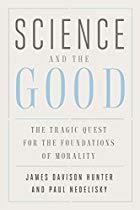 From a review of James Davison Hunter and Paul Nedelisky’s Science and the Good: The Tragic Quest for the Foundations of Morality
From a review of James Davison Hunter and Paul Nedelisky’s Science and the Good: The Tragic Quest for the Foundations of Morality
Can science tell us how we ought to behave? In Science and the Good, a book that crosses the boundaries of history, philosophy, and psychology, sociologist James Davison Hunter and philosopher Paul Nedelisky examine nearly 400 years of scientific attempts to discover the sources and meaning of morality. That effort, they conclude, has failed. Science can tell us the way things are but not the way things ought to be. In the language of philosophy, it can’t derive an “ought” from an “is.”
…
Before the dawn of the Enlightenment era, late-medieval scholastics such as Thomas Aquinas had produced moral theories based on theological, rather than naturalistic, premises. They believed that through observation of the created order, one could discover the purposes for which God had designed particular creatures or activities—and the moral laws that flowed from those purposes. But in the 17th century, the Dutchman Hugo Grotius and other political philosophers wanted to discover a moral code that could operate without invoking God. (paywall) Daniel K. Williams, “Why Science Can’t Tell Us How to Live” at Christianity Today
The moral code invoked anything and everything else instead.
One really interesting development is the rise of social justice science, where even right answers are no longer a form of morality but rather a tool of oppression. Sadly, they are losing what they once had.
Science and the Good: The Tragic Quest for the Foundations of Morality
Follow UD News at Twitter!
See also: The failed search for an evolutionary morality (Richard Weikart’s reflections on Science and the Good)
and
Yes, the new science of morality can ground moralities in science—all of them, in fact
Copyright © 2018 Uncommon Descent . This Feed is for personal non-commercial use only. If you are not reading this material in your news aggregator, the site you are looking at is guilty of copyright infringement UNLESS EXPLICIT PERMISSION OTHERWISE HAS BEEN GIVEN. Please contact legal@uncommondescent.com so we can take legal action immediately.
Plugin by Taragana
Michael J. Behe's Blog
- Michael J. Behe's profile
- 219 followers


